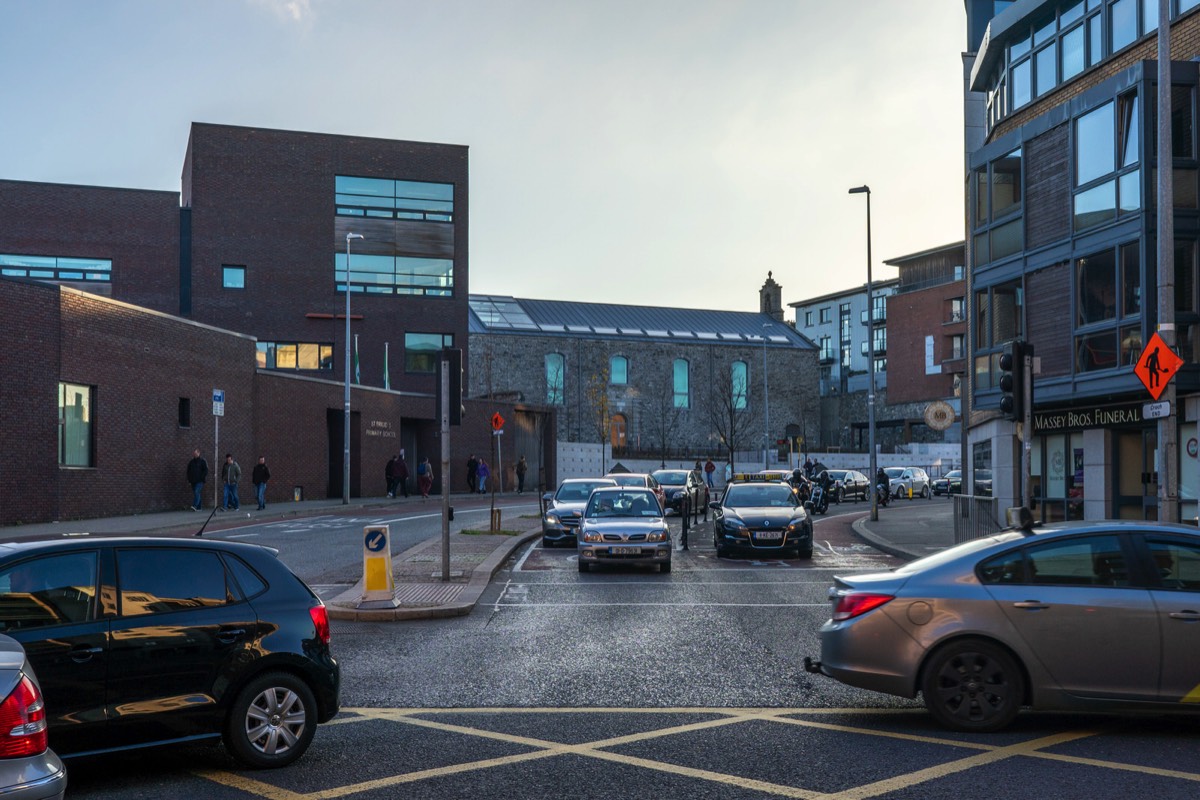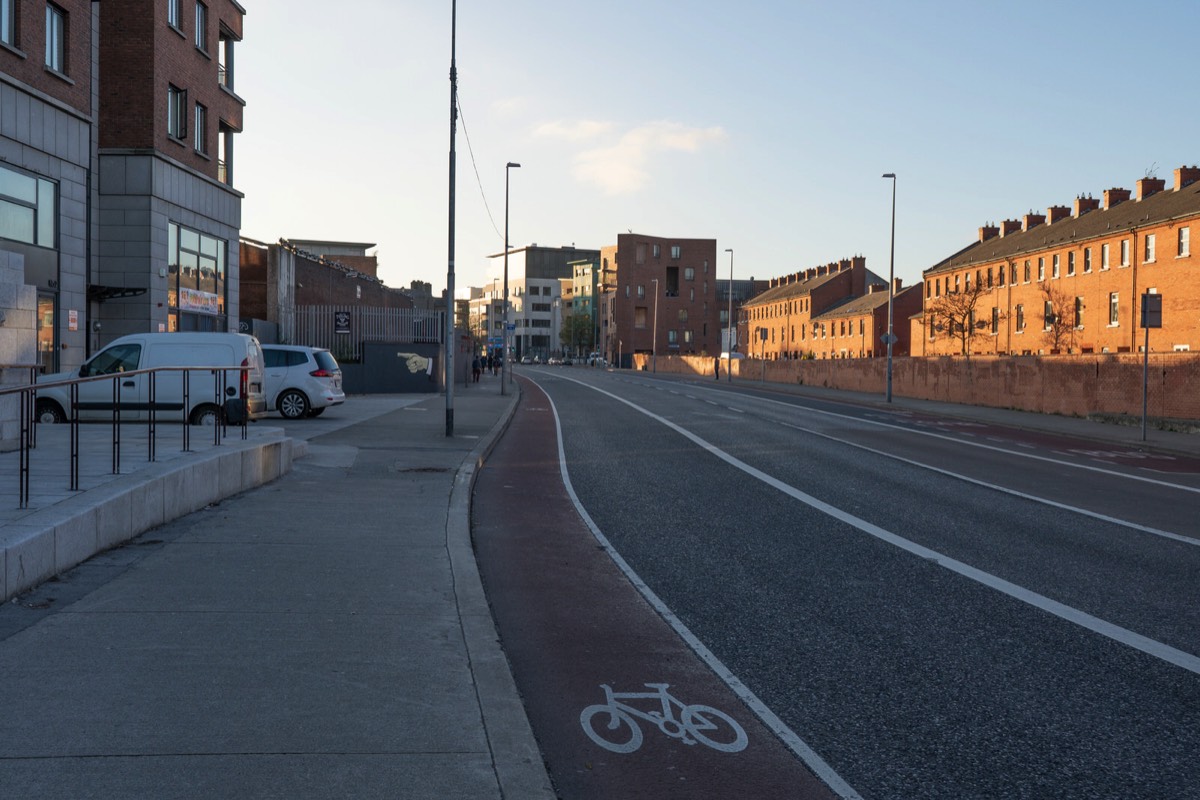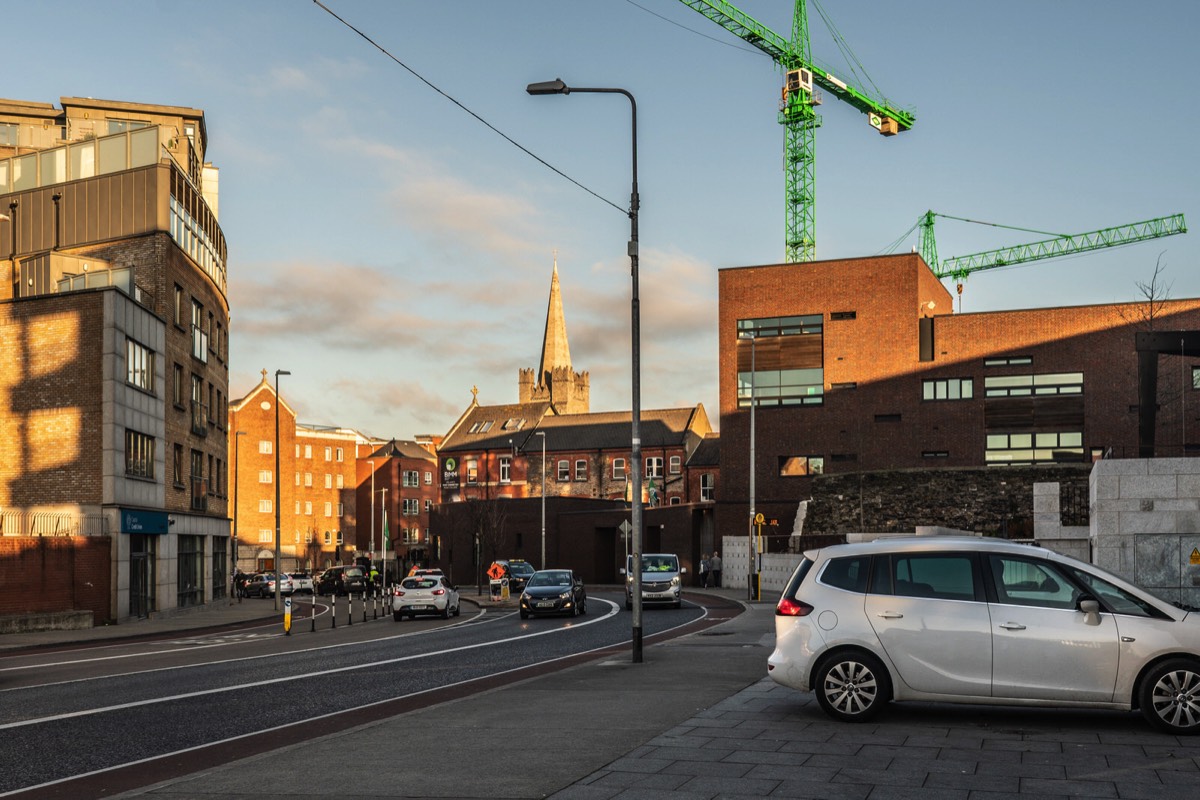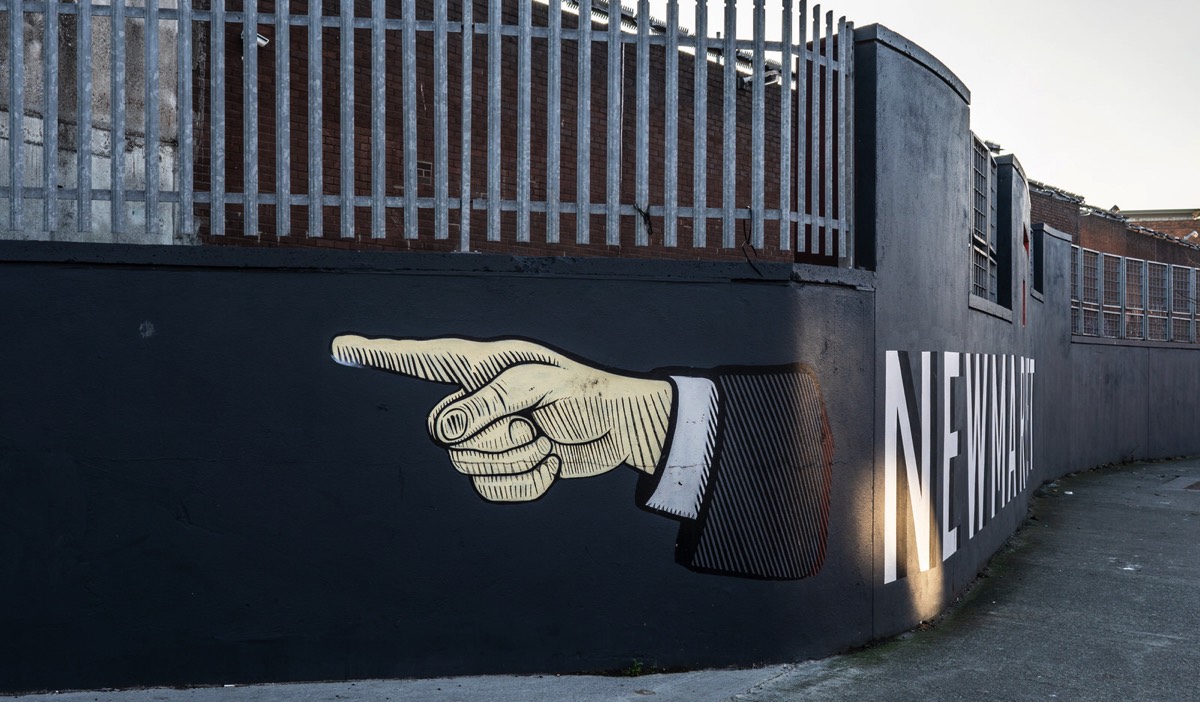SAINT LUKE'S AVENUE OFF DEAN STREET
THIS IS KNOWN AS ST. LUKE'S AVENUE [OFF DEAN STREET]
This is the location of St Luke’s Church which was closed to the public in 1975. The church was built between 1715 and 1716 but suffered a fire in 1986.
Behind the church was a small cemetery. Among those interred there was Mr. Justice Hellen, second Judge of the Court of Common Pleas in Ireland, who died in 1793. Also buried here were the family of famous publisher Alexander Thom. The relief road leading to Cork St., built 1980-2000, cut through the old cemetery.
In 1994, Dublin City Council purchased the site and the graveyard was divided in two by a new road. What is now St Luke’s Avenue cut through the “Northern Graveyard” of the church. In November 2017, JJ Rhatigan completed a €3.25m 13-month restoration and repurposing of the 17th century Huguenot Church into a three-storey modern state of the art office, with two floors suspended from the roof truss structure within the walls of the 300-year old Church. cif.ie/2018/05/31/jj-rhatigan-restoration-breathes-new-li...
The parish lay at the southern end of the Liberty of Thomas Court and Donore, which in turn was located to the west of the medieval city of Dublin. The northern boundary was the Coombe.
Most of the parish population in the late 17th and 18th centuries were weavers in the Dublin Liberties. Wool manufacturing more or less died out after the Wool Act of 1699, which prevented the export of Irish wool, but silk, cotton and poplin industries continued to employ large numbers and generate wealth until the end of the 18th century. In 1766, in order to check the growth of Catholics, the British government ordered a religious census to be carried out by the Protestant clergy, which showed the parish had 4,953 Catholics and 2,908 Protestants. The Catholics did not have a parish church of their own in this parish, but belonged to the Catholic St. Nicholas parish, but they did, from 1729, have six schools here, all run by women.
After the collapse of the weaving trade and the economic slump after the Act of Union, most of the parishioners were left destitute. So proverbial was this parish for its poverty, that in the 19th century the advertisement of the annual charity sermon for St. Luke's was headed by the words, "The Poorest Parish in Dublin."
A school was established for poor boys of the parish in 1810. When the school was moved to New Street in 1862, the building was converted to form the Widows Alms House, which is still standing.
www.dublincity.ie/main-menu-services-planning-heritage-an...
This is the location of St Luke’s Church which was closed to the public in 1975. The church was built between 1715 and 1716 but suffered a fire in 1986.
Behind the church was a small cemetery. Among those interred there was Mr. Justice Hellen, second Judge of the Court of Common Pleas in Ireland, who died in 1793. Also buried here were the family of famous publisher Alexander Thom. The relief road leading to Cork St., built 1980-2000, cut through the old cemetery.
In 1994, Dublin City Council purchased the site and the graveyard was divided in two by a new road. What is now St Luke’s Avenue cut through the “Northern Graveyard” of the church. In November 2017, JJ Rhatigan completed a €3.25m 13-month restoration and repurposing of the 17th century Huguenot Church into a three-storey modern state of the art office, with two floors suspended from the roof truss structure within the walls of the 300-year old Church. cif.ie/2018/05/31/jj-rhatigan-restoration-breathes-new-li...
The parish lay at the southern end of the Liberty of Thomas Court and Donore, which in turn was located to the west of the medieval city of Dublin. The northern boundary was the Coombe.
Most of the parish population in the late 17th and 18th centuries were weavers in the Dublin Liberties. Wool manufacturing more or less died out after the Wool Act of 1699, which prevented the export of Irish wool, but silk, cotton and poplin industries continued to employ large numbers and generate wealth until the end of the 18th century. In 1766, in order to check the growth of Catholics, the British government ordered a religious census to be carried out by the Protestant clergy, which showed the parish had 4,953 Catholics and 2,908 Protestants. The Catholics did not have a parish church of their own in this parish, but belonged to the Catholic St. Nicholas parish, but they did, from 1729, have six schools here, all run by women.
After the collapse of the weaving trade and the economic slump after the Act of Union, most of the parishioners were left destitute. So proverbial was this parish for its poverty, that in the 19th century the advertisement of the annual charity sermon for St. Luke's was headed by the words, "The Poorest Parish in Dublin."
A school was established for poor boys of the parish in 1810. When the school was moved to New Street in 1862, the building was converted to form the Widows Alms House, which is still standing.
www.dublincity.ie/main-menu-services-planning-heritage-an...




As an Amazon Associate I earn from qualifying purchases
You will find links to buy products from Amazon, Google and other partners. If you click on these links, you’ll find that the URL includes a small extra piece of text which identifies that the click came from my websites. This text is an affiliate code, and it means that I get a small percentage of the money you spend if you choose to buy that product, or, in some cases, other products from the site soon after. These affiliate links help pay the costs of producing my websites and ensure that the content is free to you.